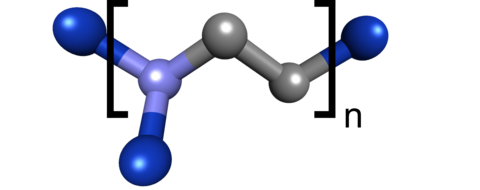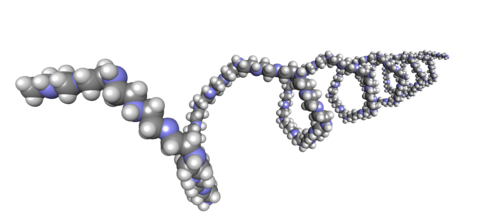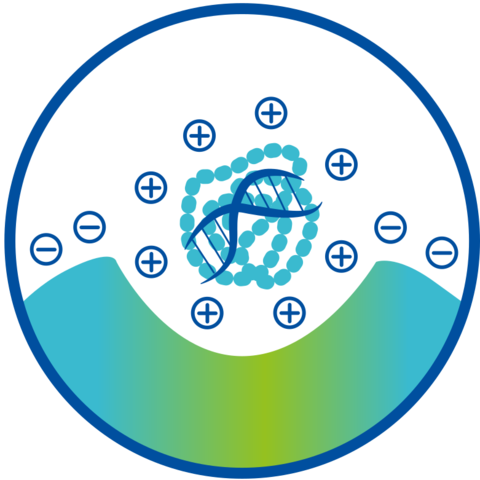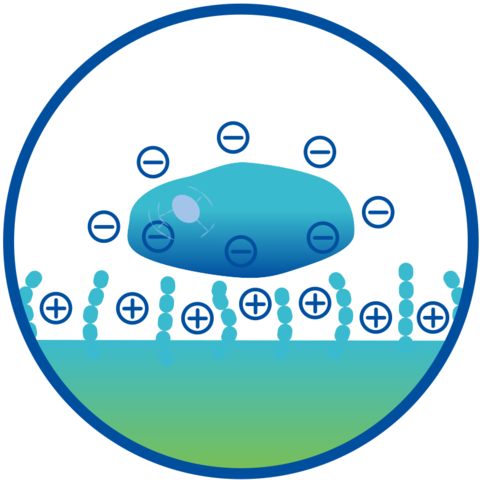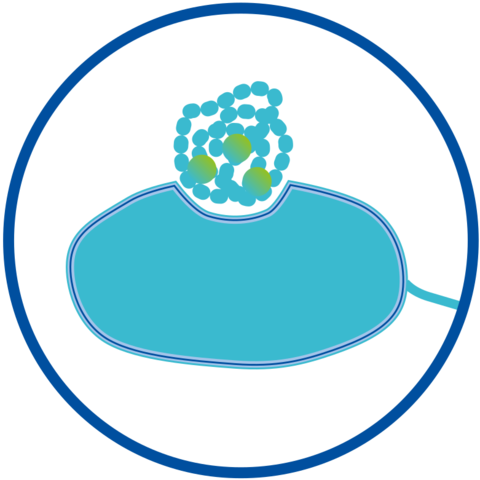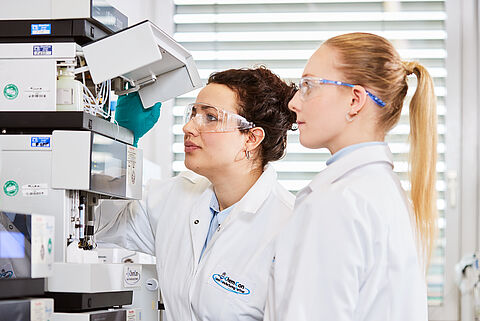There are numerous applications for polyethyleneimines. They can be components of everyday products such as detergents or cosmetics, but also have highly specialized applications in biology and pharmacology, provided the necessary quality standards are met. At ChemCon, we are capable of producing polymers in pharmaceutical-grade quality. Some applications of polyethyleneimines produced under GMP conditions include:
- Transfection agents for nucleic acids
- Binding promoters for cells
- Permeabilization of bacteria
PEI at ChemCon
For many years, polymer chemistry has been a field in which ChemCon has gained extensive experience. Our polymer chemists are experts in their field and can work with you to synthesize a polymer tailored to your specifications. Particularly in the area of polyethyleneimines and polyoxazolines, we are one of the few companies capable of conducting syntheses under GMP conditions. This makes our polymers suitable for pharmaceutical applications. Thanks to their high customizability, the products can be perfectly tailored to your specific needs. Another advantage of working with ChemCon is the continuous collaboration from the development phase to GMP synthesis. We are the right partner for your project!
Customization
Due to the various functional groups, polyethyleneimines are highly flexible. We can implement the right functional group for your specific application.
We can also adjust chain length, molecular weight distribution, degree of substitution, end groups and more.
Applications
Polyethyleneimines are capable of condensing DNA into positively charged particles. These particles bind to the anionic cell surface and are taken up by endocytosis into the cell interior. Once inside the cell, the protonation of the amines decreases the osmotic potential, causing the vesicles to swell, burst, and release the polymer-DNA complex into the cytoplasm.
Downloads
Here you can find more information:
![[Translate to Englisch:] ChemCon Firmenbroschüre](/fileadmin/_processed_/2/2/csm_ChemCon_Company_Brochure-2024_web_144dpi_75__53bcee528e.jpg)
Company brochure
![[Translate to Englisch:] ChemCon PEI and POx Polymers](/fileadmin/_processed_/e/b/csm_ChemCon_PEI_and_POx_Polymers_fd2133b56f.png)

